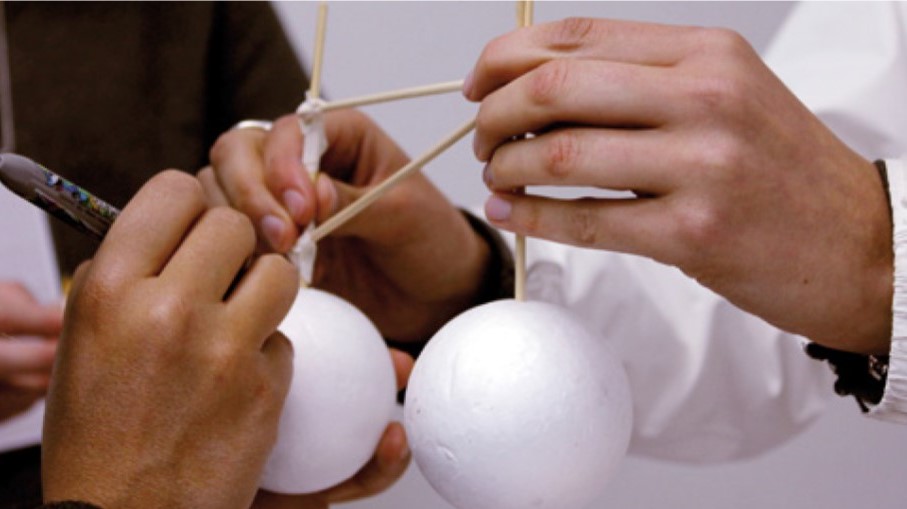CREATIVIDAD, INTERDISCIPLINA Y DISEÑO PARA LA INNOVACIÓN
Contenido principal del artículo
Resumen
LA INNOVACIÓN REQUIERE DE LA INTERACCIÓN DE DIVERSAS MIRADAS DISCIPLINARES Y DE LA COLABORACIÓN DE INDIVIDUOS CON DISTINTAS CAPACIDADES. NO HAY INNOVACIÓN SIN CREATIVIDAD, LO QUE A LA CREATIVIDAD INSTALA COMO UN INSTRUMENTO METODOLÓGICO FUNDAMENTAL EN EL EJERCICIO PROFESIONAL. FRENTE A ESTA NECESIDAD LAS UNIVERSIDADES HAN TENIDO QUE INCORPORAR DIVERSOS CURSOS Y PROGRAMAS ORIENTADOS A DESARROLLAR COMPETENCIAS DE EMPRENDIMIENTO, CREATIVIDAD E INNOVACIÓN, SIN EMBARGO NO HAY SUFICIENTE EVIDENCIA ACERCA DEL EFECTO QUE ESTOS CURSOS TIENEN EN LOS ALUMNOS. DIFERENTES AUTORES HAN OBSERVADO LOS PROCESOS CREATIVOS Y HABILIDADES DEL DISEÑADOR, TRATANDO DE ENCONTRAR UN DISPOSITIVO METODOLÓGICO REPLICABLE QUE FACILITE LOS PROCESOS DE INNOVACIÓN. ESTE ARTÍCULO EXPONE LOS RESULTADOS PRELIMINARES DEL PROYECTO DE INVESTIGACIÓN INAUGURAL DEL ÁREA DE INVESTIGACIÓN DE LA FACULTAD DE DISEÑO “CARACTERIZACIÓN DEL PROCESO CREATIVO EN EQUIPOS INTERDISCIPLINARIOS” QUE BUSCA CARACTERIZAR EL PROCESO CREATIVO DE EQUIPOS INTERDISCIPLINARIOS, IDENTIFICANDO LAS PARTICULARIDADES QUE CADA DISCIPLINA APORTA A DICHO PROCESO. PARA ELLO SE CONFORMARON GRUPOS UNIDISCIPLINARES E INTERDISCIPLINARES CON ALUMNOS DE 5º AÑO DE LAS TRES CARRERAS QUE CONFORMAN ICUBO: DISEÑO, INGENIERÍA Y NEGOCIOS. DENTRO DE LOS EQUIPOS DE TRABAJO INTERDISCIPLINARIO, SE OBSERVARON GRUPOS DE ALUMNOS DE DLAB, CON FORMACIÓN EN CREATIVIDAD Y EXPERIENCIA EN TRABAJO INTERDISCIPLINARIO Y GRUPOS CONTROL CONFORMADOS POR ALUMNOS DE LAS MISMAS CARRERAS, PERO QUE NO PARTICIPABAN DEL PROGRAMA DLAB.
Detalles del artículo
Citas
Baeza, F. (2012) Innovación para una economía competitiva. Fundación Cotec. Economía aragonesa. N° 43. Publicación cuatrimestral de la Caja de Ahorros y M. P. de Zaragoza, Aragón y Rioja.
Ball, L. J., & Christensen, B.T. (2009). Analogical reasoning and mental simulation in design: two strategies linked to uncertainty resolution. Design Studies, 30, 169-186.
Brown, T. (2009). Change by design. How Design Thinking transforms organizations and inspires innovation. New York: HarperCollins Publishers. Carevic, M. (2006) Teoría sobre la creatividad. Marzo 2013 [Disponible en: http://www.psicologia-online.com/articulos/2006/creatividad.shtml]
Christensen, B.T., & Schunn. C.D. (2007). The relationship of analogical distance to analogical function and preventive structure: the case of engineering design. Memory & Cognition, 35, 29-38.
Christensen, B. T., & Schunn, C.D. (2009). The role and impact of mental simulation in design, Applied Cognitive Psychology, 23, 327-344, 327–344. doi:10.1002/acp
Consejo Nacional de Innovación para la Competitividad (2013) Orientaciones estratégicas para la innovación. Surfeando hacia el futuro. Chile en el horizonte 2025, Santiago de Chile
Continental AG. (2006)“In Search of Global Engineering Excellence: Educating the Next Generation of Engineers for the Global Workplace”. Hanover, Germany, Continental AG. Cross, Nigel (2001) Métodos de Diseño, Limusa Wiley, México DF.
Dorst, K., & Cross, N. (2001). Creativity in the design process: coevolution of problem-solution. Design Studies, 22, 425-437.
Duderstadt, J. (2008). Engineering for a Changing World. A Roadmap to the Future of Engineering Practice, Research, and Education. The Millenium Project. The University of Michigan. United States.
Hocevar, D. (1980) Divergent Thinking and Creativity. Intelligence, 4, 25-40.Kaufman, J. C., & Beghetto, R. (2009). Beyond Big and Little:The Four C Model of Creativity. Revi ew of General Psycology.
Kolko, J. (2011). Exposing the magic of design. A practicioner’s guide to the methods & theory of synthesis. New York: Oxford University Press Inc.
Maher, M. L., Poon, J., & Boulanger, S. (1996). Formalising Design Exploration as coevolution. In Advances in formal design methods for CAD (pp. 3-30). Springer US.
Mamykina, L., Candy, L., & Edmonds, E. (2002). Collaborative Creativity. Communications Of The ACM, 45(10), 96-99.
Neck, H., Greene, P. (2011). Entrepreneurship Education: Know Wolds and New Frontiers. Journal of Small Bussiness Management 49 (1), 55-70.
Pearson, Informe Final Evaluación de la PSU Chile. Resumen Ejecutivo. Recuperado el 24 de octubre de 2013, desde: http:// www.mineduc.cl/usuarios/mineduc/doc/201301311058200. ChilePSU-Resumen_Ejecutivo.pdf
Perez, C. (2002). Technological Revolutions and Financial Capital: The Dynamics of Bubbles and Golden Ages. Edward Elgar Pub. Riddersträle, J., Nordström, K. (2006), Funky Businsess, Pearson Educación, Madrid, España.
Sheppard, S., Sullivan, W. (2008). Educating Engineers: Theory, Practice, and Imagination. Palo Alto, CA: Carnegie Foundation for the Advancement of Teaching, 2008
Wiltschnig, S., Christensen, B. T., & Ball, L. J. (2013). Collaborative problem-solution coevolution in creative design. Design Studies, 34(5), 515-542.

